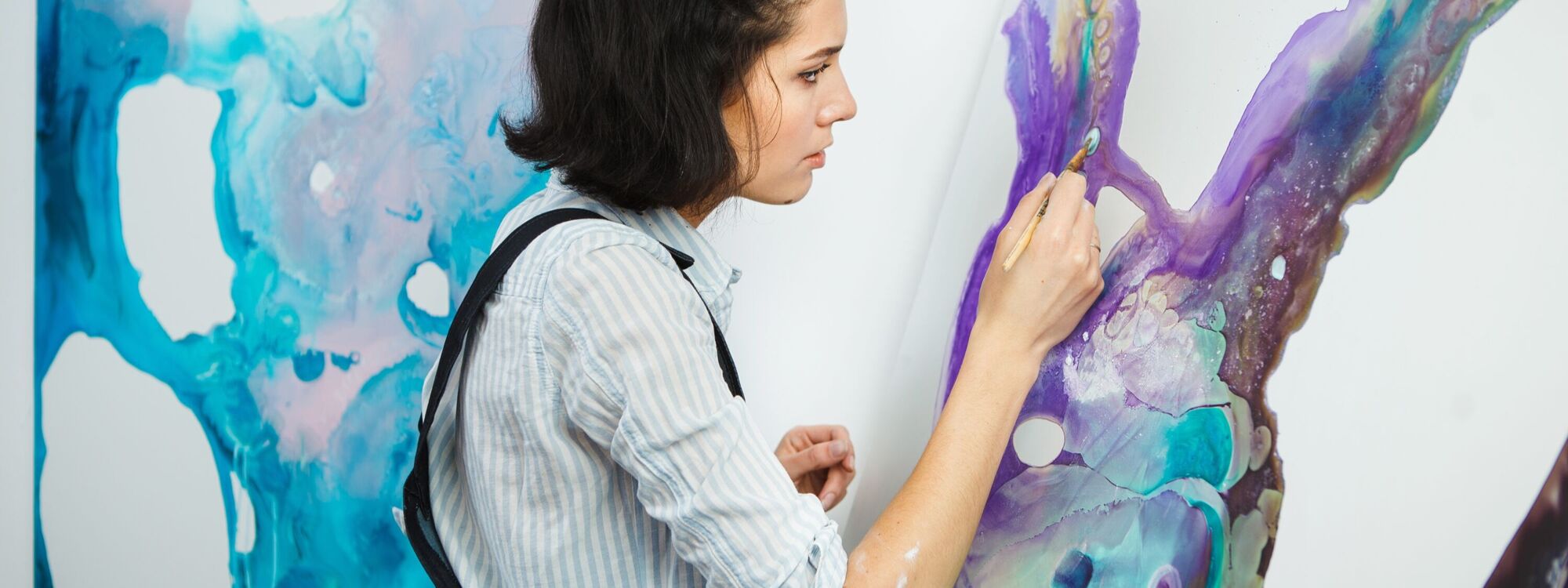
- Home
- Sixth Form
- Sixth Form Curriculum
- Art (Fine)
Art (Fine)
| Course Name: Fine Art A Level |
|---|
| Exam Board: AQA |
|---|
What will you study?
Fine Art is a 2 year linear course that consists of two components, a personal investigation and an externally set assignment which is a personal response to a chosen question set by AQA.
Fine Art introduces students to a wide range of art materials, techniques and processes. The course promotes the idea of independent thought and students are expected to pursue and explore investigations into areas of their own interests in response to a given theme. Students are encouraged to work in many more practices than they were at GCSE including but not limited to, advanced painting techniques, plaster works, printmaking, ceramics and installation pieces.
In Year 12 you will have a series of workshops that explore a range of art techniques linked to a central theme. As this is your first experience of art in Sixth Form, it will be mainly skill based lessons for the first term. You will recap vital skills from GCSE and learn new techniques which you can incorporate into your future personal project.
In Year 13 you are required to build on the knowledge, understanding and skills gained in year 12 with greater depth of study. This might be achieved by:
- Greater specialisation in a particular medium or process
- Extended development of particular themes, ideas, concepts or issues
- Further theoretical research or more rigorous exploration of an inter-disciplinary or multi-disciplinary approach.
Component 1: Personal Investigation
Students are required to conduct an investigation, into an idea, issue, concept or theme, supported by written material. The focus of the investigation must be identified independently by the student and must lead to a finished outcome or a series of related finished outcomes. The investigation should be a coherent, in-depth study that demonstrates the student's ability to construct and develop a sustained line of reasoning from an initial starting point to a final realisation. The investigation must show clear development from initial intentions to the final outcome or outcomes. It must include evidence of the student's ability to research and develop ideas and relate their work in meaningful ways to relevant critical/contextual materials. The investigation must be informed by an aspect of contemporary or past practice of artists, photographers, designers or craftspeople. Student's work must be supported by written material to confirm understanding of creative decisions.
Component 2: Externally Set Assignment
Personal response to a question set by AQA. Each question paper will consist of a choice of eight questions to be used as starting points. Students are required to select one. Students will have a Preparatory period following receipt of the paper. Students should consider the starting points and select one. Preparatory work should be presented in any suitable format, such as mounted sheets, design sheets, sketchbooks, workbooks, journals, models and maquettes. Following the preparatory period, students must complete 15 hours of unaided, supervised time. The course emphasis is on learning by doing and allows learners to develop their creativity and independent thought. Due to the personal aspect of the course students, are expected to be self-motivated and carry out work outside of lessons.
What skills will you develop?
You will be expected to demonstrate an overarching knowledge, understanding and skills from the following areas of study:
- Fine art: drawing, painting, mixed-media, sculpture, ceramics, installation, printmaking, moving image (video, film, animation)
- Three-dimensional design: ceramics, sculpture, exhibition design, design for theatre, television and film, interior design, product design, environmental design, architectural design and jewellery/body ornament
How will you be assessed?
The course is assessed firstly by subject teachers; this is then moderated by an external examiner at the end of the academic year.
- Personal Investigation: 60%
- Externally set assignment: 40%
Some Orleans Park Students have continued to study art in various art schools both nationally and internationally including some of the top British art schools: Camberwell, Central Saint Martins and Kingston.